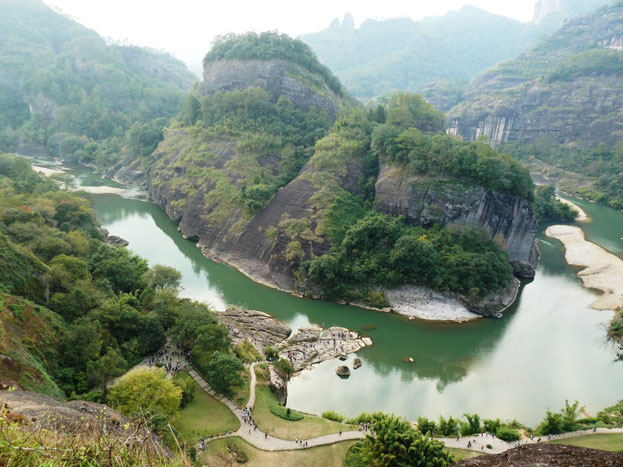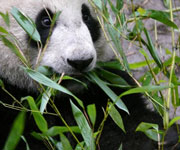Mount Wuyi is one of the most outstanding subtropical forests in the world. It is the largest, most representative example of a largely intact forest encompassing the diversity of the Chinese Subtropical Forest and the South Chinese Rainforest. The riverine landscape of the Nine Bend River (lower gorge) is also of exceptional scenic quality in its juxtaposition of smooth rock cliffs with clear, deep water. The Mount Wuyi landscape has been protected for more than twelve centuries. It contains a series of exceptional archaeological sites. Mount Wuyi was the cradle of neo-Confucianism, a doctrine that played a dominant role in the countries of Eastern and South-Eastern Asia for many centuries and influenced philosophy and government over much of the world.
Continent: Asia
Country: China
Category: Cultural
Criterion: (III)(VI) (IX) (X)
Date of Inscription: 1999
The Largest and Best Preserved Area
The site contains what are probably the largest and best preserved areas of humid subtropical forest in the world. It includes a range of vegetation types, with differences largely associated with elevation. Probably the most extensive and important vegetation types are the evergreen broadleaved forests, which include some of the largest tracts of humid subtropical forests in the world. Eleven broad vegetation patterns have been described, including shrub forest, brushwood and meadow steppe.
The known fauna of Mount Wuyi has received international recognition for its high diversity and large numbers of rare and unusual species. Among the vertebrates are 49 species which are endemic to China and three that are endemic to this locality: a bird called David's parrot bill, and two amphibians. Other rare and important species in the area of Mount Wuyi include Chinese tiger, clouded leopard, leopard, black muntjac, mainland serow, Chinese black-backed pheasant and Chinese giant salamander.
 |
| Mount Wuyi China |
Browse Gallery Plus UNESCO Storyline
The area is one of considerable geological and geomorphological interest. It has been one of intensive volcanic activity and large fault structures, further influenced by water erosion, weathering and collapse. These have led to the formation of a landscape with characteristic features such as winding streams, columnar and dome-shaped cliffs, and systems of caves.
The earliest human occupation in the Mount Wuyi region antedates the Xia dynasty (late 3rd millennium BC). With the consolidation of the Chinese Empire by the Han dynasty (late 3rd century BC to early 3rd century AD) Wuyi was fully incorporated into the state system, its ruler becoming a vassal of the Han Emperor. It was at this time that Mount Wuyi acquired its status as a sacred mountain. Mount Wuyi was first a centre of Taoism, when many temples and study centres were established, but Buddhism also developed alongside, and by the 17th century had largely superseded Taoism.
The cultural elements are concentrated in two areas in the extreme east of the nominated property. In the lower stretches of the Nine Bend River and the mountainous area to the north, the 18 wooden boat coffins in rock shelters high on the steep cliffs, supported on so-called Hongqiao boards, which have been dated to the 2nd millennium BC, are extraordinarily well preserved. This area contains the remains of 35 ancient academies dating from the Northern Song to Qing dynasties (10th-19th centuries).
It closely integrated into the natural landscape, little remains of most of them. Similarly, few of the 60 Taoist temples and monasteries that have been located survive to any degree of completeness. There is also a number of tombs, the oldest dating back to the Shang dynasty (late 2nd millennium BC), and inscriptions in this area. Also of interest is evidence of the tea culture: in the 11th to 16th centuries there was an imperial tea farm here, producing tea for the imperial court.
The second area is the archaeological site of the Han city of Chengcun. Discovered in 1958, this is a walled city. The circuit of walls survives intact; the layout of the town is in accordance with the principle of urban design characteristic of southern China at this period. Four large building complexes have been located in the interior, tentatively identified as palaces or administrative centres.
Browse All UNESCO World Heritage Sites in
China. The original UNESCO inscription
Here!!!




